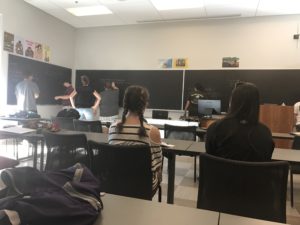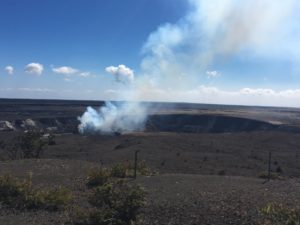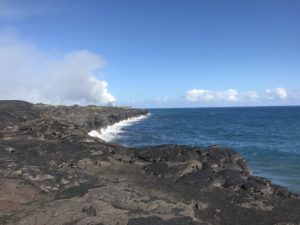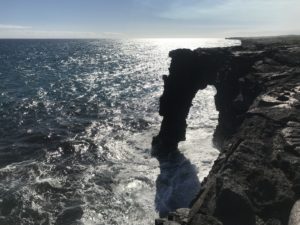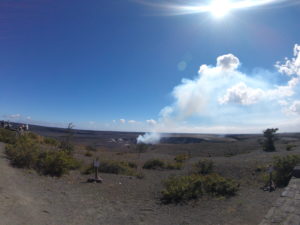This was one of the most special days for me so far. While I do want to talk about the amazing things that I saw and bought at the Hilo market, the day was particularly important for me because a piece of my identity was brought to my attention and (maybe) questioned. As we go from island to island, from story to story, and discussion to discussion, it is clear that the concept of identity is being threaded throughout our course. But, how can we talk about identity of others without thinking about and perhaps acknowledging the identity of ourselves?
A little background for those that may not know– When I was a baby, I was left in a movie theatre in Nanjing, China by my biological parents. I am actually grateful that they chose the movie theatre because so many people frequent that location that I was heard (probably crying as babies do) and brought to the one orphanage in the area. I spent three months (a pretty short about of time on the scale of things) being cared for in the orphanage before my adopted mother and father came to pick me up. I left China when I was just over five months old (fun fact: I came home on Christmas Day) and haven’t really looked back.
The point of me telling you all this is not to gain sympathy or to make you all think of me differently– I don’t think of myself as being any stronger than any one of you because of it– but rather, because, whether I choose to acknowledge it daily or not, my adoption, my ethnicity, and my race are all part of my identity, which, as Pugh talks about, has shaped my reality that I live in today.
I bring this up because at the market today, I met a woman who was born and raised in Hawai’i. She kept saying: “I’m of the seventh generation…” and would proceed to count seven out on her finger. She told me about her father and how he is from Kona. She talked about her family’s coffee farm in Kona that was supposed to be passed down from generation to generation but somewhere along the way the land was not theirs anymore (sounds familiar). She even talked about how she remembers seeing large ships coming to the island when she was a child. This whole conversation started from me telling her that I am here to learn about Hawaiian culture. Her response: “oh, Hawaiian culture…I can tell you about Hawaiian culture.” After she finished walking me through her generations she looked me up and down and just paused. My inclination is that she noticed that I am not white. She then asked where I was from. At this point, I had been talking to her for so long that Lillian and Lydia had no idea where I was (sorry, friends!) and thought that I better wrap up the conversation so in the interest of time I responded by saying that I was from New York City. The conversation lasted quite a bit longer so clearly, not the answer that she was expecting or perhaps even looking for.
I proceeded to tell her that I was from China and immediately she lit up. She said: “China! Tell me about your ancestors, you must be able to trace them back quite far.” I admit that I don’t know much about Chinese culture but presumed that the importance of ancestors for the Chinese is similar to that of Hawaiians. I told her that I was adopted and I didn’t know my parents. Long silence…it was as if heart broke. “so sad, so sad. You know how we feel, you too have lost your culture.”
Have I lost my culture? What are the similarities between my change in identity through my adoption? Well, there are a lot of parallels but what I lost I also gained, which can’t be said the same for the Hawaiians and I believe that there lies the difference. However, this lady, who now knows more about my personal life than many of my closest friends, got me thinking about everything that I have been connecting throughout this journey.
My identity is not rooted in something lost, it is rooted in something found. My identity is made up of something that was given to me not something that was taken. My identity is a display of my own voice.
What I am still pondering is the woman’s inability to see my adoption or to her, my loss of my culture as being anything but tragic. I think that for her, something clicked. I (like many of you) am not just an “ordinary” tourist shopping around Hilo market looking for gifts with little meaning. For her, my white parents in New York, are another example of white people taking away from foreign culture and thus, for her my story angered her in the same way that her own does. I think that for her, rooted culture and biology (generations of ancestors) are far more important than anything else.
What did I take away from this intense 15 minute conversation?
Have I lost my culture?
I am here studying about a lost culture, a loss of ancestry– a defeat of identity. Perhaps I am even advocating for the role that Americans should be playing in mending (if that is even possible) the damage and injustice that has been done. I am absolutely arguing, based on what I have heard, seen and read, that there is a dire need for Hawaiians of my generation to learn about their culture, especially their language because while it may not directly be necessary for them now, it is necessary for their ancestors that did not have the opportunity or right to do so.
So do we get to choose our identity fully?
In Hawai’i I get the sense that there are certain things in their lives that are a part of their identity because they were born into it– this speaks to the importance of ancestors. They are Hawaiian large % make up or not. Their kingdom was taken. They, according to Jamaica Osorio and Maikalani (the professor at the language school), have a responsibility to make the Hawaiian language a part of their identity. Whether it is necessarily relevant now or not, I am Chinese because I was born that way. That is a part of my identity so perhaps I shouldn’t have quit learning Chinese, perhaps I should be taking classes like many of the students we have met to learn about my culture and my history.
Here’s the difference though. I am American and (despite recent events) I am proud to be American. But today, I wasn’t seen as an American, I was seen as someone, who, like many, many Hawaiians, was victimized by white supremacy.
— I have so much more to share like what it was like being able to support locals today, what it was like seeing someone who was in my class yesterday at the language schools selling food at the market, and about the hula lesson but due to the length of this blog already I think I might save that for another entry. For now, I’ll just post some pictures of things (mostly food) that were taken at the market–
I am sorry if this isn’t too helpful for all of you about the facts and happenings of the day (I have notes on a lot of what we experienced in the afternoon that I can post tomorrow) but I think that this was an important story and experience to tell in detail.
I think that this is the definition of how identity is created and perceived here in Hawai’i and I think, if anything, it shows how important– maybe even the most important–culture, biological ancestry, and language is to native Hawaiians.
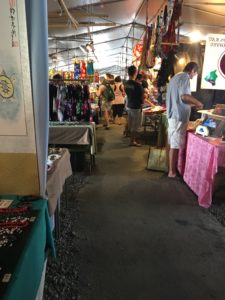

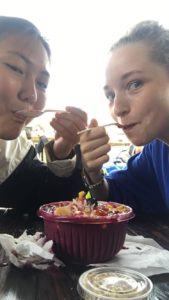
(Hilo Market- photo by Lydia) (Rambutan fruit- very tasty!) (Acai bowls for dessert at the market)

 Follow
Follow







